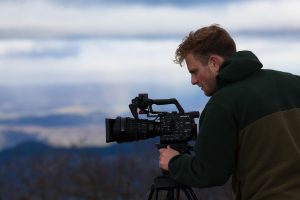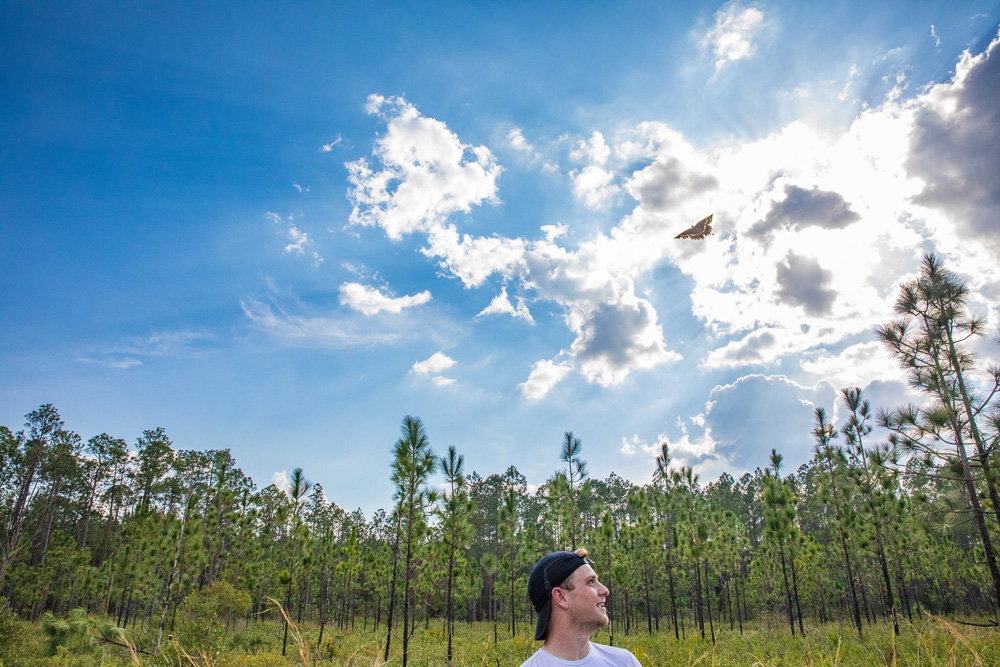Macson McGuigan, a senior environmental sustainability and digital media major at Eastern Mennonite University (EMU), was recently named one of 12 North American Nature Photography Association (NANPA) College Scholars. He is the second EMU student to win the scholarship.

The prestigious award enabled McGuigan to attend NANPA’s biannual summit in Jacksonville, Florida, from Feb 26-March 4.
“This is an opportunity of a lifetime,” says Professor Steven David Johnson, who teaches conservation photography and encouraged McGuigan to apply. “Many former scholars who have received this scholarship are now widely recognized in the nature/conservation photography world as explorers, filmmakers and leaders. NANPA’s president, Clay Bolt, has called this opportunity a ‘career-maker.’”
Johnson’s course is one of two in the United States highlighted by The International League of Conservation Photographers; the other is taught at Stanford University.
In addition to summit registration and admission, McGuigan’s scholarship paid for room and board, three years of association membership, a professional portfolio review, and special opportunities to network with mentors.
But the most unique feature of the award is the opportunity to participate in a “field-based storytelling project” for an area client. Because the summit moves to different locations every other year, clients bring scholarship participants and the professionals who help into many locales.

McGuigan joined other scholarship winners and a crew of professionals, among them a National Geographic Society Young Explorer and a doctoral researcher in evolutionary biology, to produce a film for the non-profit North Florida Land Trust. The six-minute film, posted below, features the organization’s “O2O” campaign to connect the Ocala and Osceola National Forests with a wilderness corridor of undeveloped land.
The group spent three days filming “from sun-up to sun-down” in both national forests, on the Camp Blanding military reservation and with private landowners within the proposed corridor.
“We went to three springs, which are really valuable for clean drinking water in Florida,” says McGuigan. “We also saw longleaf pine ecosystems, sandpine scrub, flatwoods, sandhill, swamps, wet prairies – a bunch of really beautiful, unique ecosystems.”
The team shot footage of endemic scrub jays, spotted turtles and various snakes and lizards. McGuigan was one of two photographers who worked together for 45 minutes to capture “around five seconds of usable footage” of the red-cockaded woodpecker. He says the team was “dramatically spoiled” by the half a million dollars of state-of-the-art equipment donated by Canon.

Despite only three to four hours of sleep each night as they edited and compiled their work, he called the experience “the greatest week ever.”
After a screening at the conference, the film will be used in the North Florida Land Trust’s campaign to advocate land easements to private landowners in the proposed corridor.
“It was just a wonderful opportunity to build a portfolio and do this kind of work. The conference was great because we got to meet with photographers who are icons in the conservation photography industry,” says McGuigan.
McGuigan returns from the experience in Florida invigorated for an ongoing project that is serving as his senior practicum and senior art show for his two majors: an advocacy video for Friends of Shenandoah Mountain’s National Scenic Area proposal.
He’ll be shooting in the field as well as interviewing landowners, organizers, and naturalists.
“This is the work I want to do in my future,” he said. “I would call it digital storytelling, with a focus in environmental issues.”
